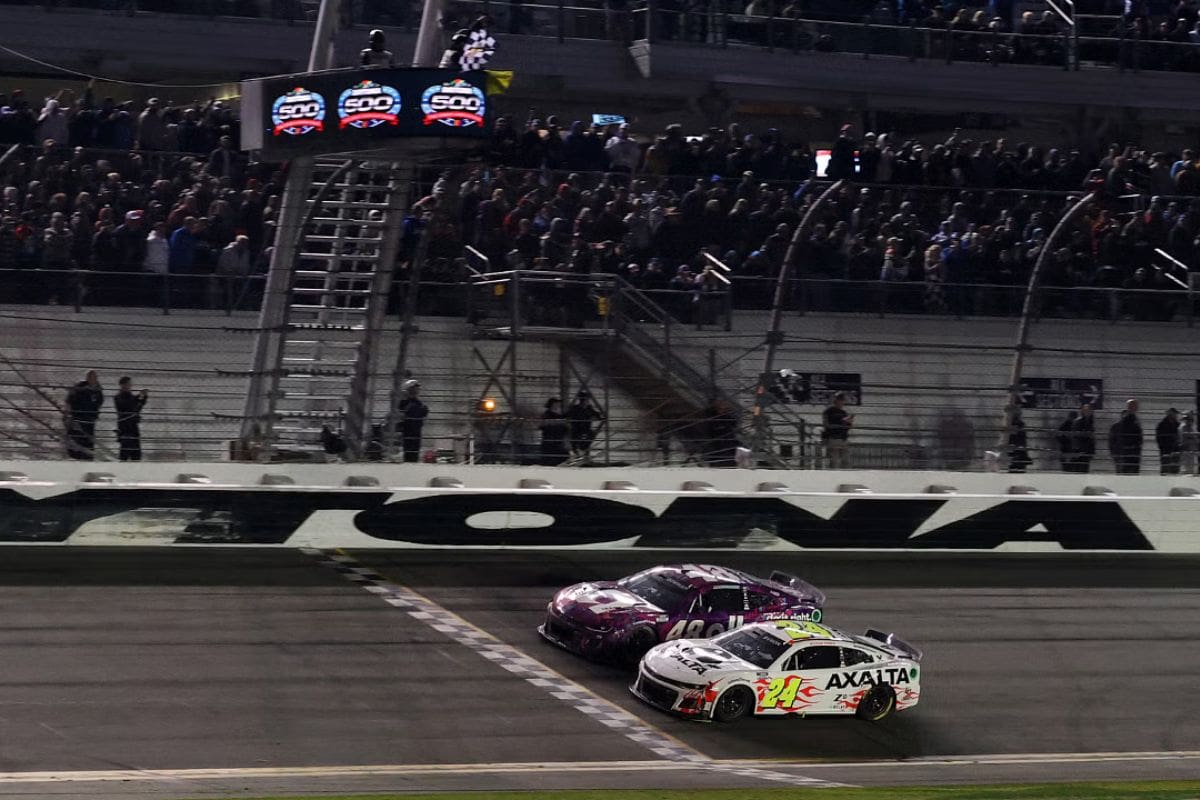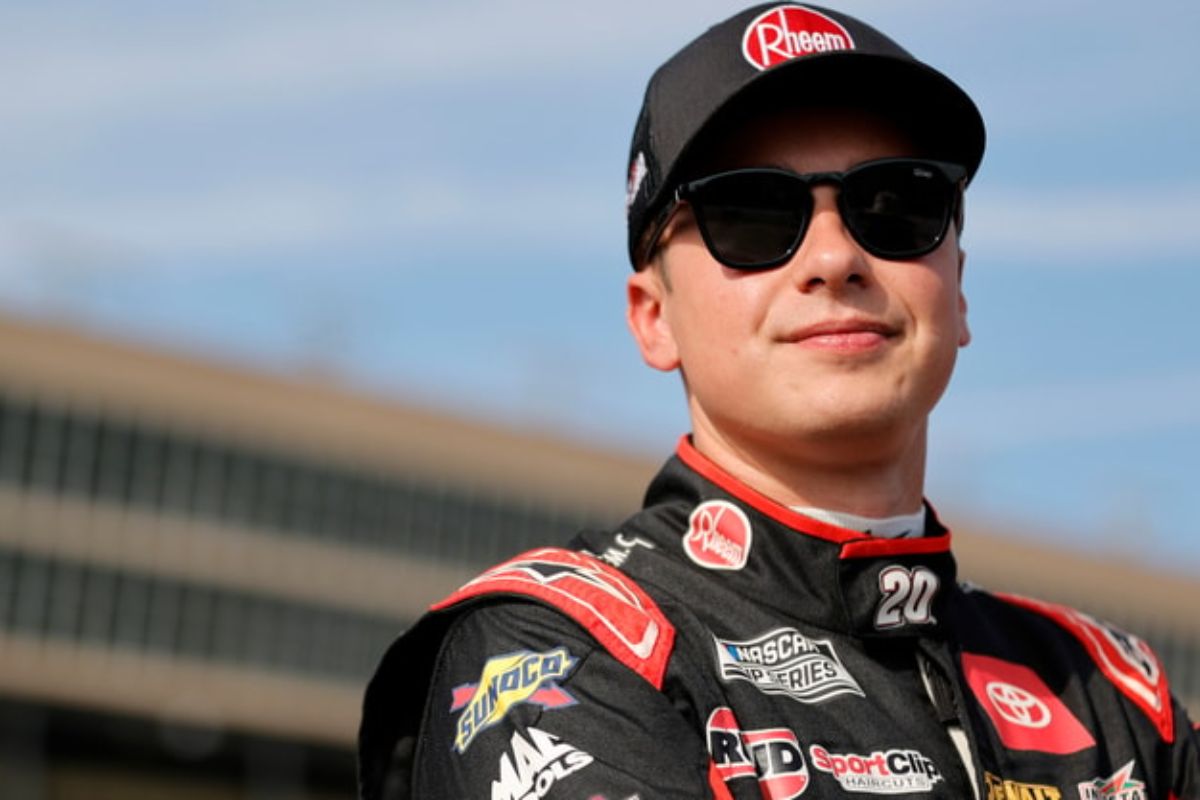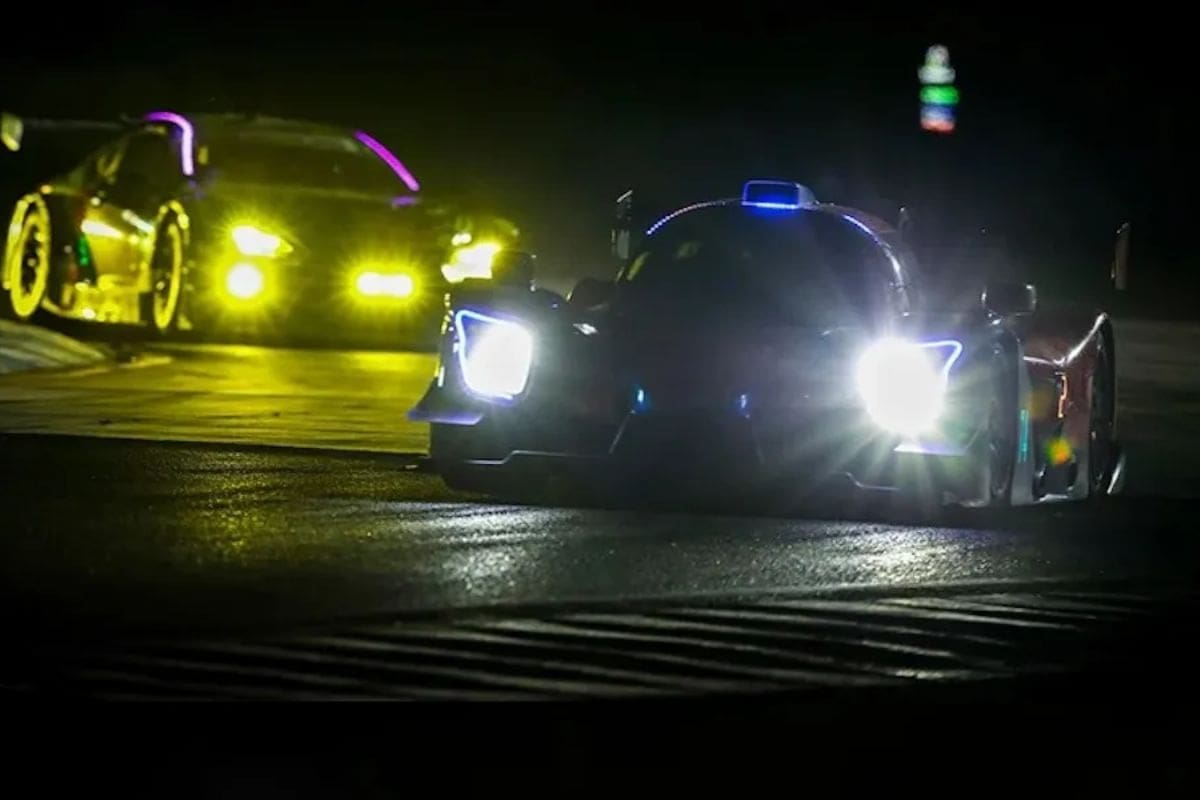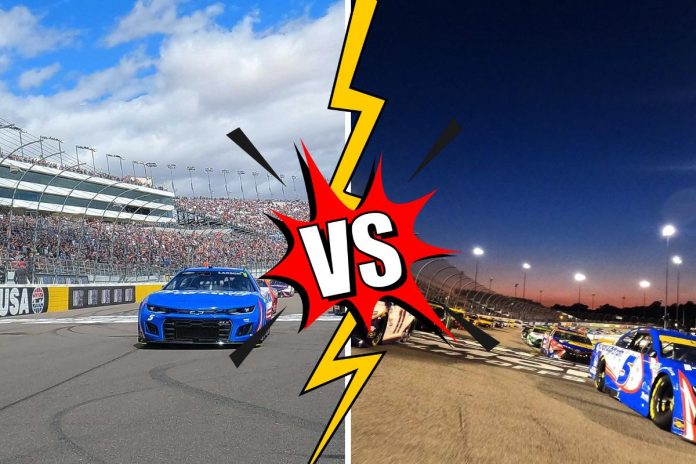Day vs Night Racing: In NASCAR, day and night racing extends beyond mere visibility and aesthetics, plunging into the depths of track temperature variations that profoundly affect race outcomes. As daylight races endure the relentless heat, track surfaces reach elevated temperatures, increasing tire degradation and challenging drivers with slippery conditions. Conversely, nocturnal races enjoy cooler track surfaces, offering improved tire grip and potentially faster lap times. This temperature-induced disparity not only dictates strategic tire and vehicle adjustments but also tests the adaptability and tactical expertise of teams and drivers.
Key Takeaways
- Day races experience higher track temperatures, reducing tire grip and increasing wear due to asphalt’s heat absorption.
- Night races generally have cooler track temperatures, enhancing tire grip and overall vehicle performance.
- Teams must adjust tire pressure and car setup differently for day versus night races to optimize performance.
- Cooler temperatures at night lead to less thermal degradation of the tires, allowing for more aggressive racing strategies.
- Variability in day-to-night temperature at certain tracks requires teams to anticipate and adapt to changing conditions throughout the race.
Track Temperature Impact on NASCAR Racing
Track temperature is a key variable in NASCAR racing, directly impacting tire grip and the overall vehicle performance on different racetracks. The intricacies of how track temperature affects tire behavior are crucial for teams and drivers to understand, as they adapt their strategies to maximize performance. As asphalt absorbs heat from sunlight, the track temperature can greatly exceed ambient air temperature, leading to increased tire wear and decreased grip. This phenomenon is particularly noticeable in daytime races where solar radiation is at its peak.
For tracks like Richmond, Homestead, and Darlington, known for their low-grip surfaces, the impact of track temperature on tire performance is less pronounced but still crucial. These tracks have surfaces that are more abrasive or have compositions that inherently offer less traction. At such venues, even minor fluctuations in track temperature can alter the racing dynamics. The cars’ handling characteristics can shift, requiring adjustments in tire pressure and camber angles to maintain optimal contact with the racetrack.
“There is not (any difference). There’s a lot of tracks that we go to… Kansas, Vegas, Charlotte that are like I’d call them medium to high grip race tracks, that really change from day to night. The low grip racetracks which Richmond, Homestead, Darlington they are pretty much… You’re going to be slipping and sliding whether it’s 90 degrees or 50 degrees.”- Bell
Furthermore, the thermal properties of different track surfaces mean that the rate of temperature change throughout a race can vary. This requires teams to anticipate and react to these changes proactively. Strategies include adjusting pit stop timing and choosing the right tire compounds that can best handle the expected conditions.

Dover Race Preview: Christopher Bell’s Chance at Victory
Moving from the broader dynamics of track temperatures, the focus now shifts to Christopher Bell’s prospects at the upcoming Dover Cup Series race. Bell, whose best finish at Dover was fourth in the 2022 season, has shown potential but also faced challenges at the Monster Mile. This year, despite some inconsistent performances, Bell’s chances of victory are bolstered by several strategic factors.
JGR and Hendrick drivers have exhibited dominance this season, setting a precedent that could play into Bell’s favor. Importantly, the teamwork and technical support from JGR could be critical in optimizing Bell’s car setup for Dover’s unique demands. Adjustments to aerodynamics, tire strength, and suspension could be key in mitigating the challenges posed by Dover’s high-banked, one-mile oval track.
- Team Dynamics: Effective communication and strategy adjustments during the race can significantly influence Bell’s performance.
- Car Setup: Tailoring the car to cope with Dover’s concrete surface and banking could help in achieving better grip and speed.
- Pit Stop Efficiency: Quick and error-free pit stops will be crucial in maintaining or improving position during the race.
- Adaptability: Bell’s ability to adapt his driving style to the changing track conditions, notably affected by temperatures, will be vital.
Christopher Bell’s Dover History and Potential for Victory
Christopher Bell’s performance at Dover has been a mix of modest achievements and notable challenges, yet his developing skill with JGR suggests a promising outlook for the upcoming race. Bell’s history at Dover features a landscape of fluctuating results, highlighted by a single top-five finish amidst several lower rankings.
Given the improved performance of JGR and Hendrick drivers this season, Bell’s potential for securing a victory at Dover seems increasingly feasible. This season has seen a notable uptick in Bell’s racing form, potentially culminating in his second win of the 2024 season if the Dover race swings in his favor.
| Year | Finish at Dover | Season Context |
|---|---|---|
| 2022 | 15th | Inconsistent, learning phase with JGR |
| 2023 | 5th | Gradual improvement, adapting strategies |
| 2024 | TBD | Strong start, potential for 2nd win of season |

Strategies for Success at Dover and Beyond
As the NASCAR series approaches the Monster Mile, a notoriously demanding track, Bell’s team can employ several advanced strategies to improve their odds of success. Given the minimal impact of track temperature changes on tire performance at low-grip racetracks, the focus at Dover should instead shift towards perfecting tire management, pit stop efficiency, and adapting to track-specific conditions.
- In-depth Analysis of Track Characteristics: Understanding Dover’s concrete surface and its effects on tire wear and grip can provide Bell with valuable insights. This knowledge allows for better chassis adjustments and tire selection, tailored specifically to the conditions expected on race day.
- Optimized Pit Stop Strategies: Efficient pit stops are critical. The team should practice and refine their pit stop choreography, aiming to minimize time lost in the pits while ensuring that adjustments and tire changes are flawlessly executed.
- Leveraging Data from Simulations: Advanced simulations can predict how changes in track conditions affect performance. Utilizing this data can guide the team in setting up the car effectively for both qualifying and race conditions.

News in Brief: Day vs Night Racing
The fluctuating temperatures between day and night races in NASCAR have a notable impact on track conditions, influencing tire grip and vehicle performance. Teams must carefully adjust their strategies, including tire adjustments and aerodynamics, to optimize car setup for varying conditions.
Christopher Bell’s historical performance and understanding of the Dover track position him favorably for potential victory, highlighting the importance of adaptability and strategic foresight in maximizing outcomes at Dover and in broader NASCAR competitions.
Also Read: Kevin Harvick’s Nightmare at COTA: An Unforgettable Race Weekend


